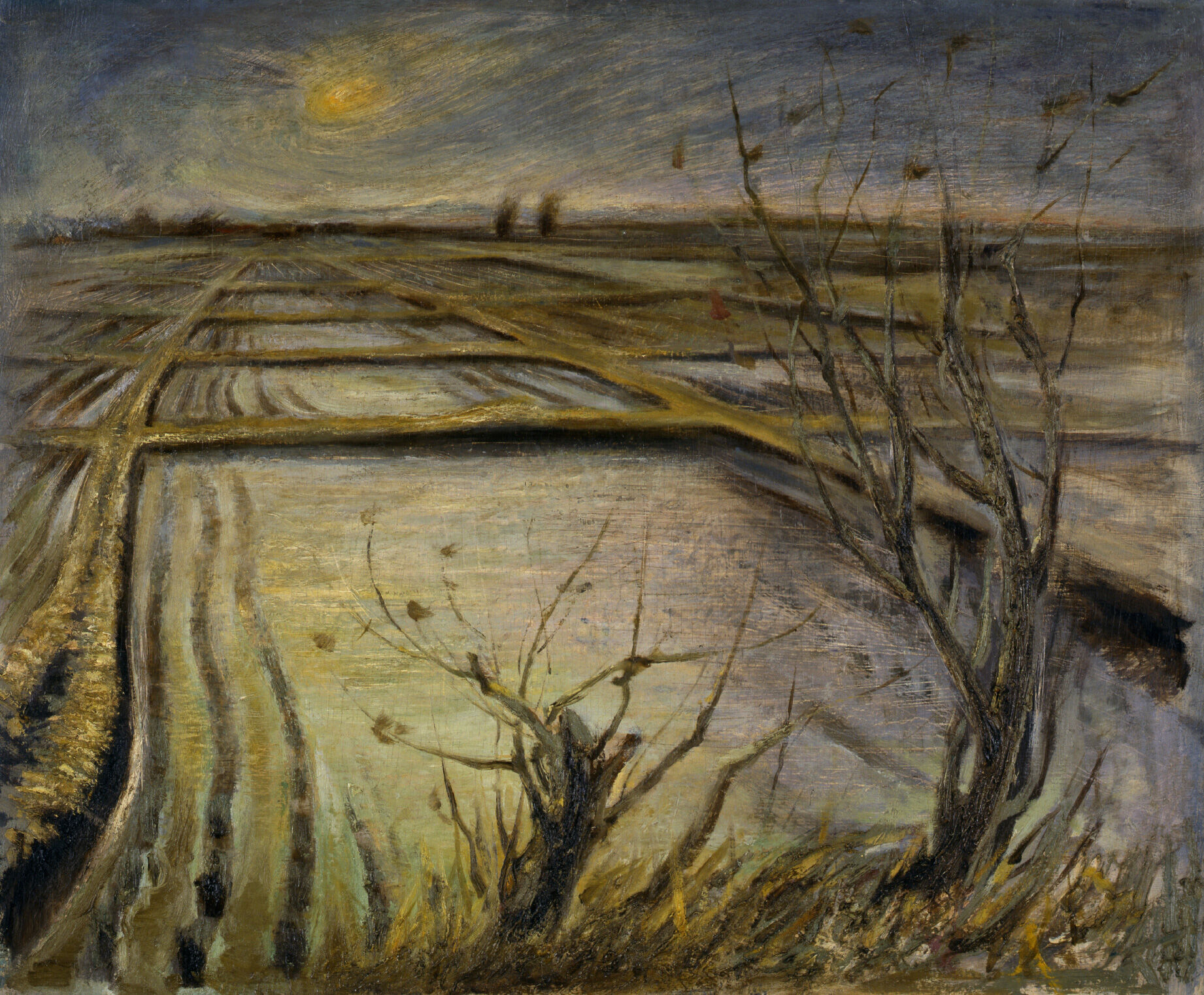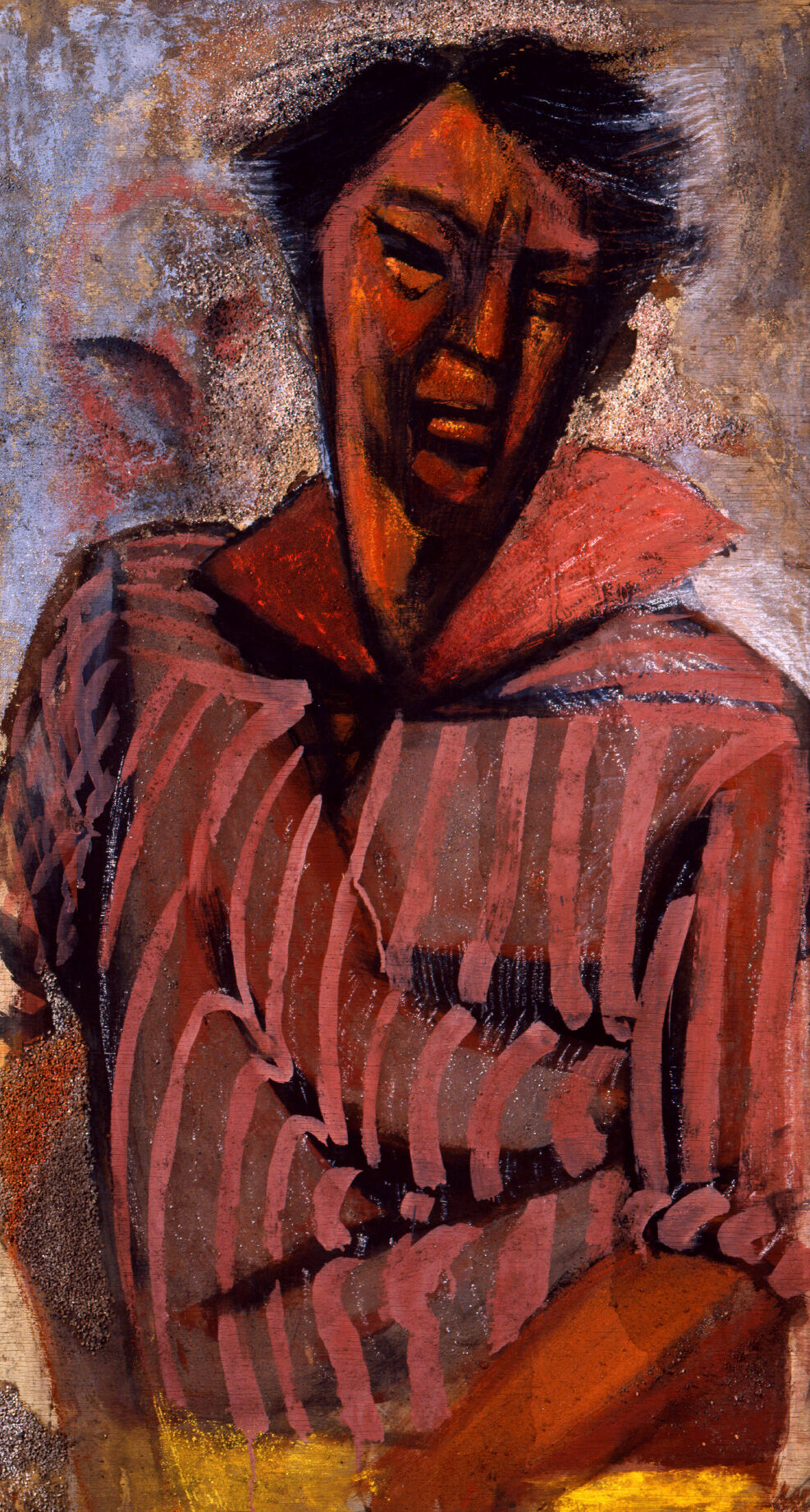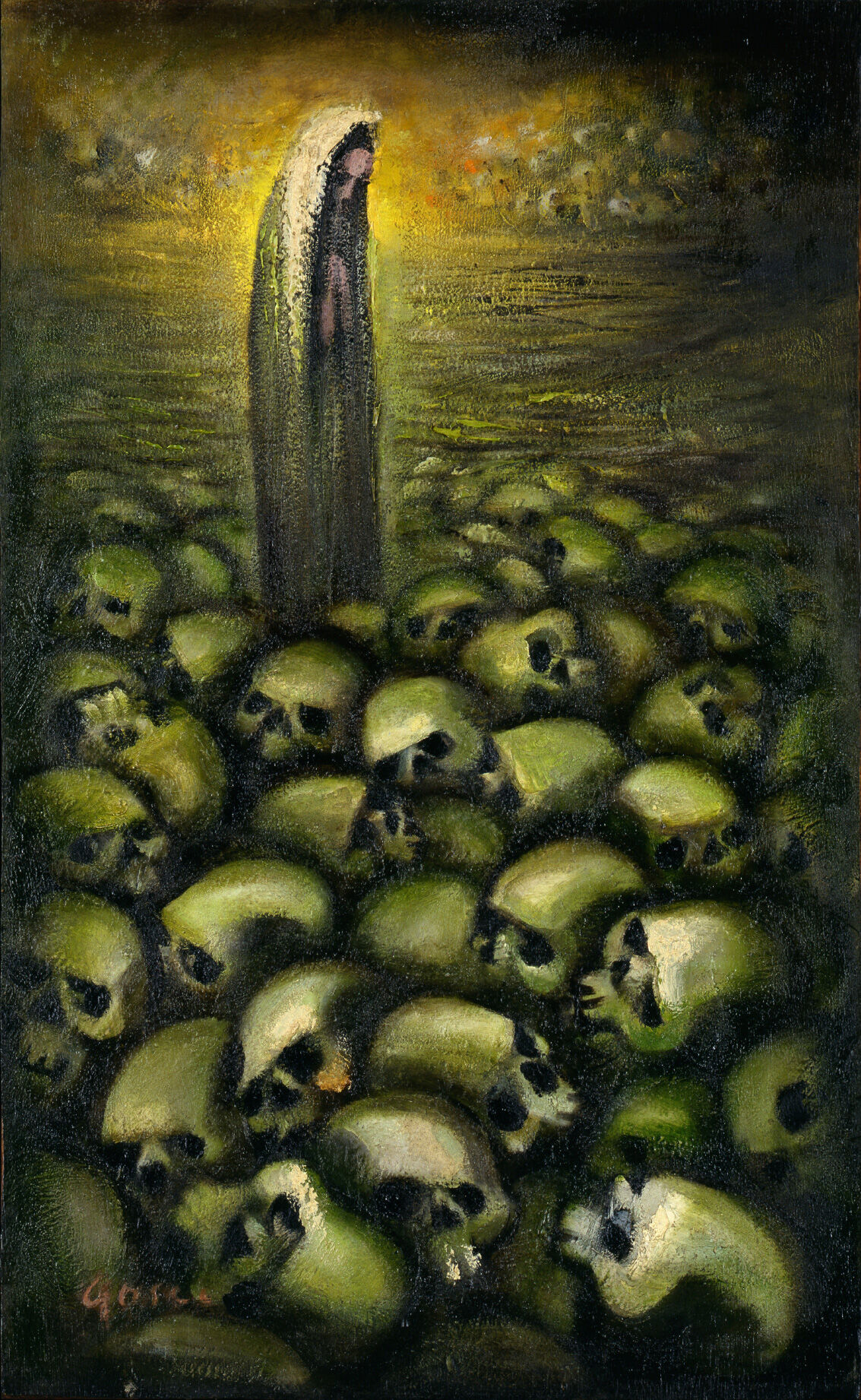ABE Gosei (1910-1972)
ABE Gosei was born in 1910 in Namioka Village (now part of Aomori City). In 1923, he entered Aomori Middle School, where the famous writer DAZAI Osamu was his classmate. After graduating, he enrolled in the Kyoto Technical School of Painting in 1929 and studied Japanese painting. He returned to Aomori after graduating in 1934. While teaching art and other subjects as a substitute teacher at Noheji Elementary School and later Noheji Middle School, he studied Western painting with a focus on the Renaissance along with the Mexican muralist movement and began painting in oil as a member of “Gureruya,” a group he formed with his cousin TSUNEDA Ken, who was also an artist.
ABE moved to Tokyo in 1935. In 1938, he painted “People Seeing off Soldiers” (collection of the Hyogo Prefectural Museum of Art), which was accepted for the exhibition of the Nika Art Association in the same year. The work drew acclaim and appeared in the magazine “World Pictorial” along with Junkichi Mukai’s “Charge.” However, after the ambassador to Argentina criticized the work for its lack of patriotism, ABE fell out of favor with group exhibitions as an artist unfit for the times and began to distance himself from the art world. His work “Countryside” corresponds to this period.
In the autumn of 1943, he was called to duty for the third time and dispatched to Manchuria. After Japan’s defeat, he was detained in a Siberian labor camp and did not return to Japan until January 1947. Following his return, as ABE suffered from his terrible experiences in Siberia, the sensational death of his close friend Dazai in 1948, and various torments of everyday life, his works shifted from his prewar style of robust sketches and compositions to a more expressionist style with bright colors and quick, powerful brush strokes.
Although ABE moved to Tokyo again in 1952, between his everyday life and artistic activities, his distress only grew. In December 1959, seeking to escape from the confines of life in Japan, he traveled to the United States and from there to Mexico. He was offered a room in the building of the Mexican Japanese Association as a studio, where he worked diligently. In the following year, he held a solo exhibition at Salón de la Plástica Mexicana (Salon of Mexican Visual Arts), a Mexican national gallery, before returning to Japan in October 1960. During his time in Mexico, ABE had developed a new painting style incorporating Japanese techniques and themes along with Mexican mural techniques and customs, and upon his return, he held solo exhibitions all over Japan. After remarrying in 1963, he traveled back to Mexico with his wife Yuriko. In the following year, he held his second solo exhibition at Salón de la Plástica Mexicana to great acclaim and went on to tour Europe before returning to Japan. “Self-Portrait” was painted during his first stay in Mexico.
In the winter of 1964, immediately after his return to Japan, ABE was commissioned to design a monument to commemorate his close friend DAZAI Osamu. The monument was produced and installed on Cape Tosen in Ashino Park in Kanagi during the following year. However, around this time, ABE developed a fascination with the world of the dead and began to produce works representing motifs such as skulls, mummies, and dead children, often in combination with Christian themes. This tendency can be seen in “Maria with Crowd of Voiceless People (A),” which appears to reflect his horrific wartime experiences.
ABE was hospitalized for gastric surgery in 1969 and died of cancer on June 18, 1972. Due to his tormented life, the art critic HARIU Ichiro described him as shura no gaka (the painter of Asura, referring to the constantly fighting demigods in Buddhism) and even wrote a biography of ABE with that title.

≪Countryside≫
1939
Oil on board
60.9×72.6cm

≪Self-portrait≫
1960
Oil on board
120.2×64.4cm

≪Maria with Crowd of Voiceless People(A)≫
1966
Oil on board
92.2×56.1cm

